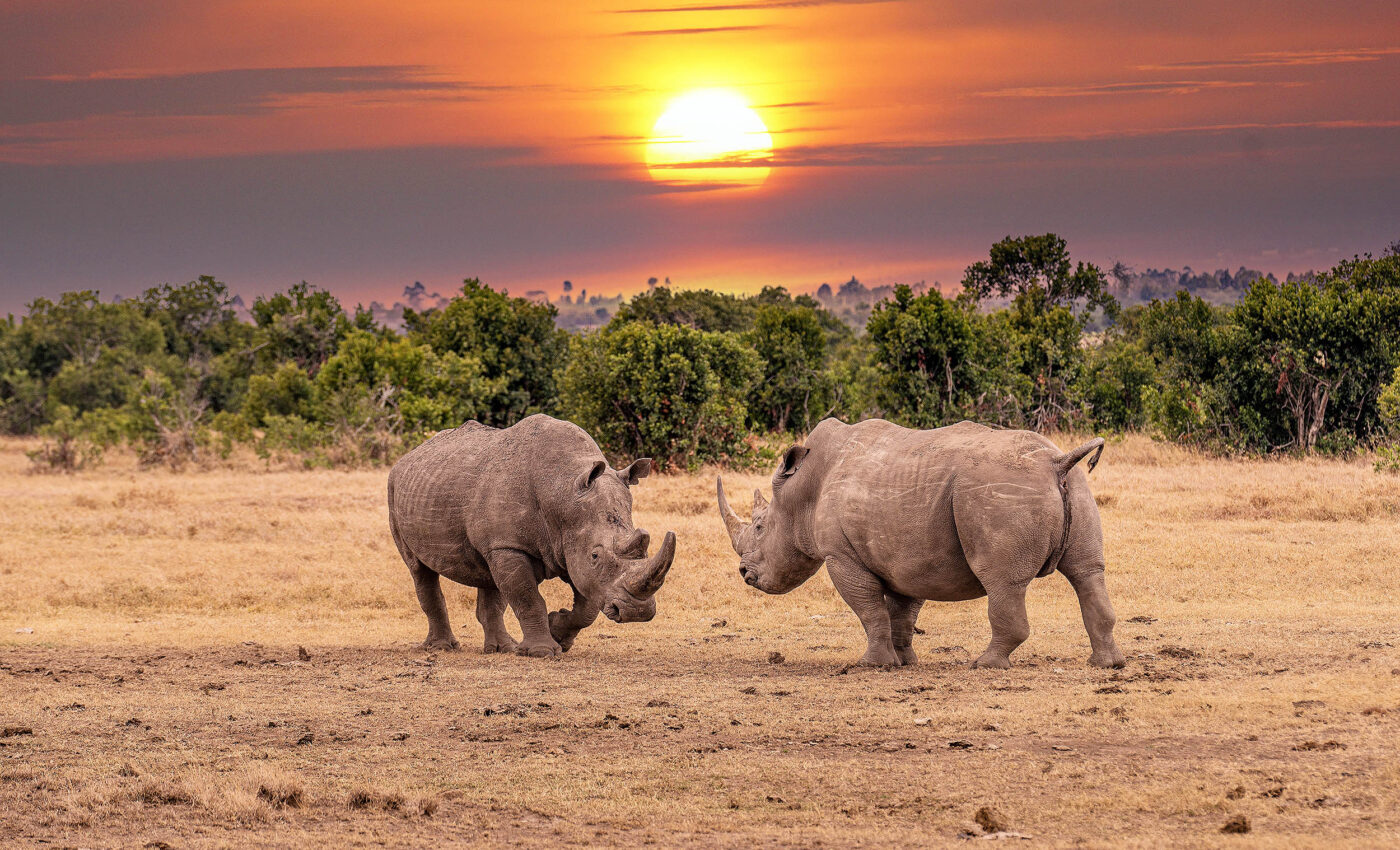
Temperatures in Africa are rising above levels that rhinoceros can tolerate
Southern Africa is home to the vast majority of the world’s black and white rhinoceros populations, holding 80% and 92% respectively.
These majestic creatures, long the focus of conservation efforts due to poaching, now face a new and potentially more devastating threat: climate change.
Impact of climate change on rhinos
A new study from the University of Massachusetts Amherst, led by Hlelowenkhosi S. Mamba, focuses on this issue.
Their findings reveal that while both higher temperatures and changing precipitation patterns are concerns, it is the rising temperatures that pose the most significant threat to rhinos.
“Generally speaking, most, if not all, species will, in one way or another, be negatively affected by the changing climate,” says Mamba.
“It is therefore important for conservationists to conduct macroecological assessments over large areas to catch trends and model futures for some of the world’s most vulnerable species to prepare to mitigate climate change’s effects, hence minimizing global biodiversity losses.”
Africa, rhinoceros, and rising temperatures
The African continent has experienced a temperature increase of 0.5 – 2 degrees Celsius over the past century. Furthermore, the IPCC projects up to another two degrees rise in the next century.
This temperature increase in Africa is particularly problematic for rhinoceros, which lack sweat glands and rely on bathing and shade for cooling.
The study focused on five major national parks across South Africa, Namibia, Zimbabwe, Kenya, Botswana, Tanzania, and eSwatini, modeling two scenarios: a high-emissions scenario and a moderate one.
They projected temperature and precipitation changes up to 2055 and 2085, assessing the parks’ suitability for rhinos.
Under the moderate emissions scenario, a warming of approximately 2.2 ºC by 2055 and 2.5 ºC by 2085 is expected, with even higher increases under the high emissions scenario. Most parks will become drier, except for Kenya’s Tsavo West National Park, which may see increased rainfall.
Black and white rhinos can’t survive in Africa
The research reveals a grim outlook: changes in temperature will likely exceed the rhinos’ tolerance limits.
White rhinos are expected to be affected earlier than black rhinos, with a drastic decrease in their occurrence probability in all parks.
“The temperature conditions in all study parks will become increasingly unsuitable for both species, but it is predicted that white rhinos will be affected earlier than black rhinos,” to quote the study.
By 2085, under high-emissions scenarios, the likelihood of either species surviving in these parks could drop to zero.
Conservation and a call to action
Etosha National Park in Namibia and Hlane National Park in eSwatini are set to become inhospitably warm for rhinos under either emissions scenario.
Timothy Randhir, senior author and professor at UMass Amherst, underscores the importance of integrating climate predictions into park and rhino management.
He proposes proactive measures such as increasing water supplies, enhancing tree cover, monitoring for stress, and planning for potential rhino migration as the world warms.
“This paper highlights the importance of using climate predictions for both park and rhino management,” says Randhir.
“We propose that park managers think now about increasing water supplies, tree cover, watching for stress and planning to allow rhino migration as the world warms.”
In summary, this research is a clarion call to conservationists and park managers. The traditional focus on poaching must now expand to include strategies countering the effects of climate change.
By understanding and anticipating these changes, we can work towards ensuring a future where these magnificent creatures continue to thrive in their natural habitats.
The full study was published in the journal Biodiversity.
—–
Like what you read? Subscribe to our newsletter for engaging articles, exclusive content, and the latest updates.
Check us out on EarthSnap, a free app brought to you by Eric Ralls and Earth.com.
—–













